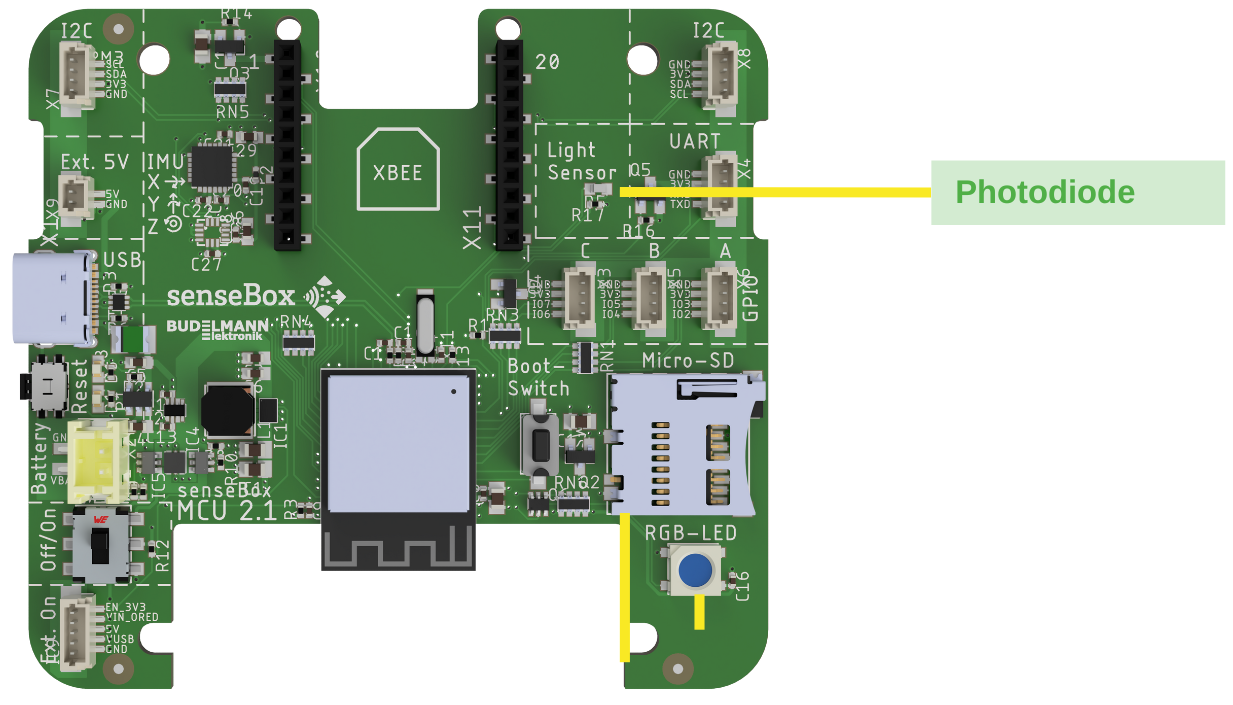Photodiode
A photodiode is a light-sensitive semiconductor that converts light into electrical energy. It is commonly used in various applications such as photodetectors, exposure meters, light barriers, and optical communication systems. Photodiodes provide readings that are proportional to the intensity of the incident light, making them useful for detecting changes in brightness or quantifying light intensities in various applications.

Photodiode installed on the MCU
The photodiode is installed on the MCU S2! You don't need to connect anything else here.
Programming (Arduino)
To test the photodiode, upload this sketch to your senseBox!
void setup() {
// put your setup code here, to run once:
pinMode(PD_ENABLE, OUTPUT);
analogReadResolution(12);
digitalWrite(PD_ENABLE, HIGH);
Serial.begin(9600);
}
void loop() {
// put your main code here, to run repeatedly:
Serial.println(analogRead(PD_SENSE));
delay(100);
}
The values for the photodiode will now be displayed in the Serial Monitor. You can also view the trend of the values in a graph in the Serial Plotter (Tools -> Serial Plotter).
Programming (Blockly)
In Blockly, the sensor can be read using the following block:
